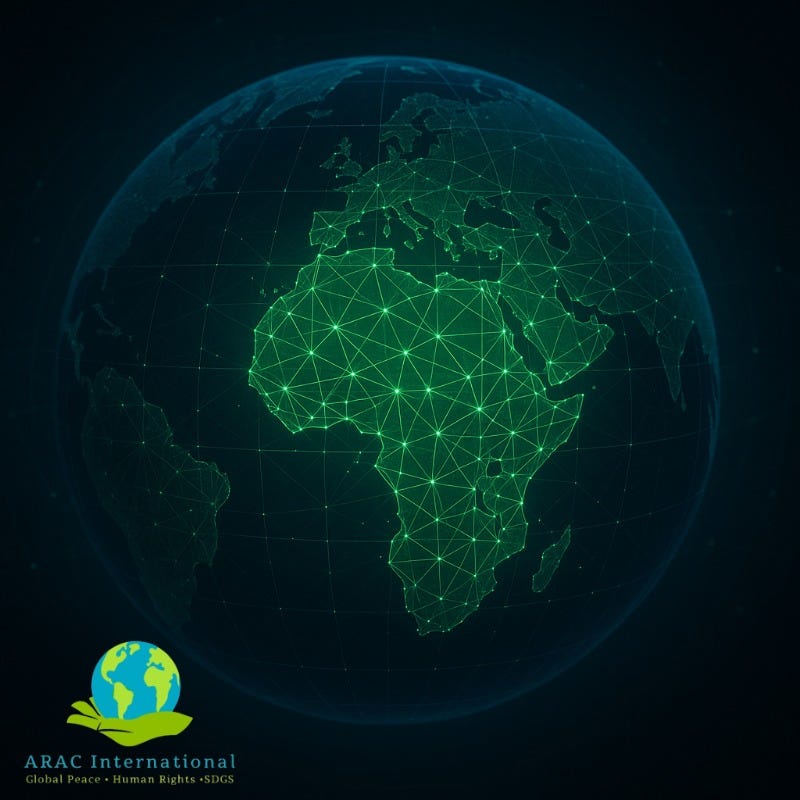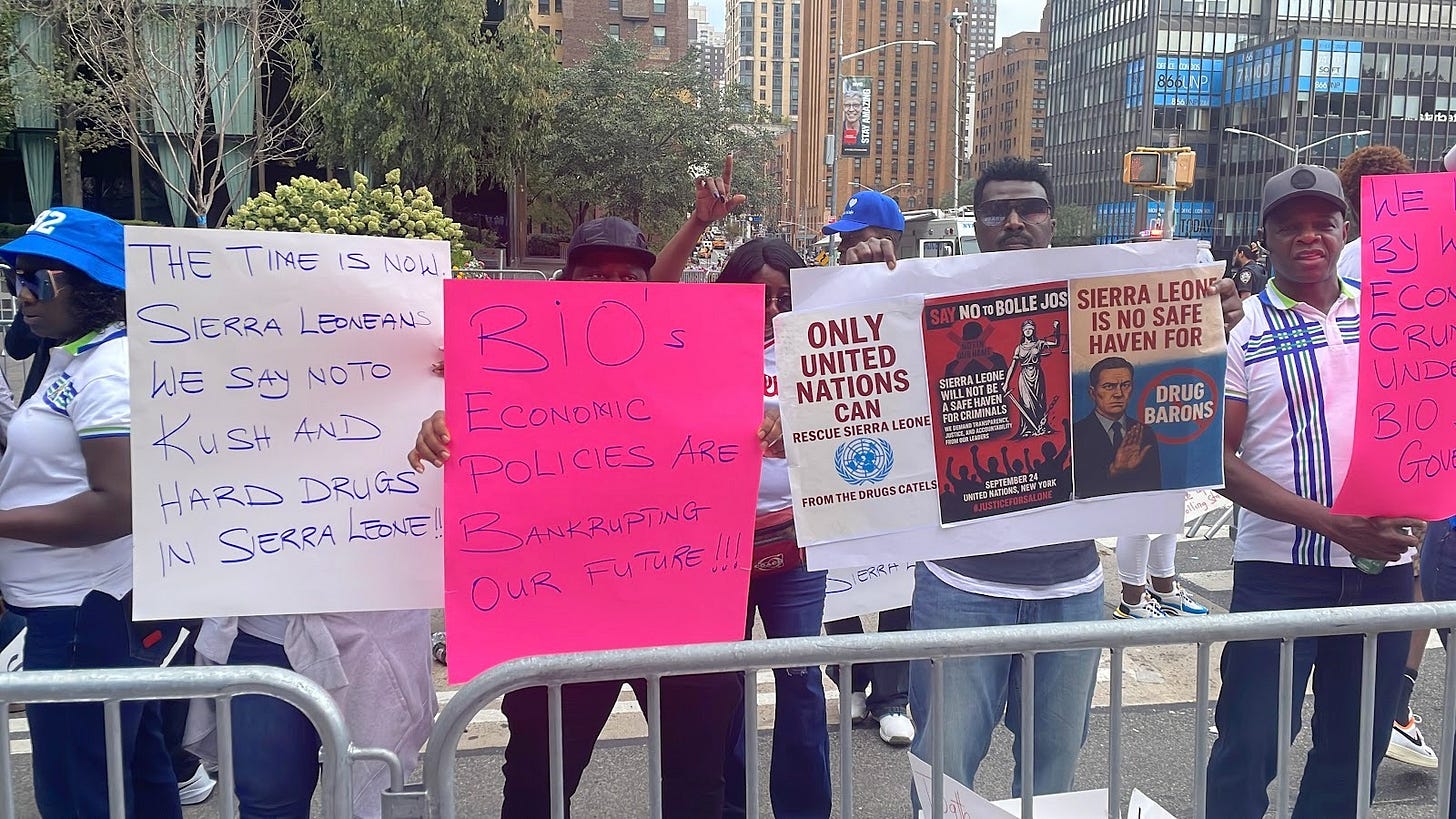SITREP: Crime–Conflict Dynamics and Illicit Markets in West Africa
Flashpoints & Frameworks Special Analysis
Date: 26 Oct 2025
AOI: Sahel to Gulf of Guinea corridors with emphasis on Benin, Niger, Nigeria borderlands; Lake Chad Basin, Casamance, Sierra Leone, and Liberia
Executive Summary
Militant southward pressure into northern Benin, a resurgent tempo in Nigeria’s northeast, and adaptive criminal financing through cattle rustling and kidnapping continue to knit together the crime–conflict economy across West Africa [1][2][10][22]. Arms flows amplified by Sudan’s war elevate proliferation risks along Chad–Libya–Sahel gateways, even as price series remain sparse in open sources [7][15][16][17][18][19]. Parallel to kinetic threats, a region-wide synthetic drug surge has triggered public health emergencies in Sierra Leone and Liberia, creating a non-kinetic destabilizer that increases recruitment vulnerability and community harm [2][3][4][5][6][9][10]. In Casamance, peace milestones are real but partial, and timber illicit trade shows resilience despite security operations and deals, suggesting that governance and livelihoods must keep pace to consolidate gains [24][25][26][27][28][29][30].
Current Situation
Northern Benin as an operational frontier
JNIM’s southward expansion has entrenched park-adjacent sanctuaries around the W–Arly–Pendjari complex, with mass-casualty attacks confirming the area’s transformation into an active front and logistics belt [1][2]. (ACLED)Northeast Nigeria conflict dynamics
ISWAP’s operational sophistication and JAS brutality produce a volatile mix of roadside IEDs, targeted base attacks, and civilian massacres linked to factional rivalries, with 2025 reporting indicating a renewed insurgent tempo and fluid micro-control at locality level [20][22][21]. (Crisis Group)Criminal financing stack: cattle rustling, kidnapping, and cross-border laundering
Cattle theft remains a durable revenue stream for armed actors in Lake Chad and Sahel theaters, with laundering through Ghana and Côte d’Ivoire markets echoing tri-border risk patterns. Kidnapping continues as both financing and coercive governance, with significant ransom-economy evidence in Nigeria [12][13][14][10][11]. (ISS Africa)Arms flows and enabling environment
Conflict-driven proliferation from Sudan raises baseline risks of heavier systems diffusing into Sahel supply chains. Open-source mapping confirms interdictions, diversion from stockpiles, artisanal production, and IED-component trafficking networks across West Africa [7][15][17][18][19][2]. (Amnesty International)Synthetics as a destabilizer
Government declarations in Sierra Leone and Liberia, plus medical and journalistic analyses, document the scale and harms of synthetic drugs such as kush and nitazenes. These trends strain health systems and correlate with youth vulnerability and community insecurity [2][3][4][5][6][9]. (Reuters)Casamance: peace advances with persistent illicit timber risks
Accords and disarmament steps mark progress, yet multiple assessments warn not all factions are included and timber trafficking remains adaptive, particularly via Gambian channels [24][25][26][27][29][30]. (ISS Africa)
Key Developments and Effects
Park-edge militarization in Benin has increased kidnapping risk bands and facilitated armed mobility and taxation along reserve perimeters. This elevates threats to conservation staff, traders, and cross-border traffic while complicating humanitarian access [1][2]. (ACLED)
ISWAP’s capabilities include armed drone usage and complex attacks, while JAS retaliatory massacres sustain a pattern of collective punishment against alleged collaborators. Civilians in Borno and peri-Lake Chad zones bear the brunt of cycling factional violence [22][21]. (Reuters)
Kidnap-for-ransom markets in Nigeria show sustained incident volumes and rising ransom demands, reinforcing the extortion economy and imposing heavy costs on households and firms [10][11]. (SBMintel)
Cattle-to-cash pipelines continue to co-travel with arms and gold routes, underpinning a diversified insurgent financing stack. Interdiction must target market nodes and movement certificates, not only theft points [12][13][14]. (ISS Africa)
Arms proliferation vectors tied to Sudan increase the probability of capability creep into the Sahel. Interpol operations and Small Arms Survey outputs evidence persistent trafficking ecosystems and artisanal production that complicate classic border-only enforcement [7][15][17][18][19]. (Amnesty International)
Synthetics crisis shifts the risk calculus from solely kinetic to health-security, requiring harm reduction, treatment scale-up, and precursor controls in Sierra Leone and Liberia, with spillover alerts in neighboring states [2][3][4][5][6][9]. (Reuters)
Casamance peace dividends will depend on inclusive implementation and sustained pressure on timber trafficking networks that proved resilient through prior operations [24][25][26][27][28][29][30]. (Africanews)
Risk Outlook
30 days
Elevated attack and abduction risk around Benin’s Alibori–WAP perimeter and on feeder roads used for taxation and cattle movement. Expect continued opportunistic IEDs and ambushes in Borno and adjacent axes [1][2][22][51]. (ACLED)
90 days
Likely persistence of kidnap-for-ransom activity in Nigeria’s North West and North Central, with ransom demands tracking SBM indicators. Arms interdictions will continue to reveal mixed provenance including diversions and artisanal repair chains [10][11][17][18][19]. (SBMintel)
180 days
If Sudan’s war sustains current intensity, expect further spillover risk of heavier systems diffusing into Sahel corridors via Chad and Libya. Casamance peace implementation will face factional buy-in and illicit timber pressure tests [15][16][24][25][26][27][29][30]. (The Washington Post)
Operational Implications
Border-to-market interventions over checkpoint saturation
Move upstream into trade governance for fuel, motorbikes, and cattle movement certificates, with anomaly-detection on consignments destined for Ghana Upper West and northern Côte d’Ivoire. This targets logistics lifelines that enable armed mobility and taxation [12][13][14]. (WATHI)Kidnapping response must hit financiers and brokers
Resource specialized investigative cells and financial tracking that prioritize ransom intermediaries and safe-house logistics over solely kinetic pursuit of foot soldiers [10][11]. (SBMintel)Arms-control posture
Exploit Interpol’s tracing and joint ops frameworks with CAR technical forensics to map diversion pathways, while addressing artisanal production and IED component trafficking spotlighted by Small Arms Survey [17][18][19]. (Interpol)Public health surge for synthetics
Scale harm-reduction, treatment, and pharmacy audits in Sierra Leone and Liberia, coupled with public information campaigns that reduce stigma and recruitment susceptibility among at-risk youth [2][3][4][5][6][9]. (Reuters)Casamance consolidation
Tie DDR and amnesty provisions to timber-trade compliance, cross-border customs cooperation, and alternative-livelihood investments to prevent crime displacement and spoiler financing [24][25][26][27][28][29][30]. (AP News)
Priority Indicators to Monitor
Benin W–A–P perimeter: Incident frequency, kidnap targeting, and taxation checkpoints on park-edge roads [1][2]. (ACLED)
Northeast Nigeria: ISWAP drone use, complex attacks, and JAS reprisal massacres; track claim patterns and locality-level control shifts [22][21]. (Reuters)
Kidnap economy: Quarterly ransom-demand medians, geospatial drift into peri-urban and highway corridors [10][11]. (SBMintel)
Cattle markets: Volume spikes and routing anomalies in Ghana Upper West and northern Côte d’Ivoire, plus seizure reports near tri-border spurs [12][13][14]. (WATHI)
Arms and IED precursors: Tracing hits, interdictions under ENACT operations, and retail signals for explosive precursors [17][18][19]. (Interpol)
Synthetics morbidity: ER admissions, overdose clusters, and precursor seizures in SL and Liberia [2][3][4][5][6][9]. (Reuters)
Casamance peace curve: DDR compliance rates, factional inclusion metrics, timber-seizure volumes on Gambian corridors [24][25][26][27][29][30]. (Africanews)
Analyst Takeaways
The main destabilizers remain concentrated in border belts, park perimeters, and market nodes that overlay logistics for fuel, cattle, and arms.
Kinetic and non-kinetic risks now travel together. Synthetic drugs and kidnapping exacerbate vulnerability where governance is thin.
Peace is a process that fails if illicit revenue streams are left intact. Timber governance in Casamance is a bellwether for durable stabilization.
References (APA)
[1] ACLED. (2025, March 27). New frontlines: Jihadist expansion is reshaping the Benin, Niger, and Nigeria borderlands. https://acleddata.com/report/new-frontlines-jihadist-expansion-reshaping-benin-niger-and-nigeria-borderlands
[2] Associated Press. (2025, April 24). Benin says 54 soldiers were killed in an Islamic militant attack last week. https://apnews.com/article/benin-attack-soldiers-militants-405bf0d7954310c508ecc5dc7ef95c33
[3] Reuters. (2024, April 5). Sierra Leone declares national emergency on drug abuse. https://www.reuters.com/world/africa/sierra-leone-declares-national-emergency-drug-abuse-2024-04-05/
[4] Voice of America. (2024, January 30). Liberia’s President declares drug abuse a public health emergency. https://www.voaafrica.com/a/liberia-s-president-declares-drug-abuse-a-public-health-emergency-/7462153.html
[5] Reuters. (2024, June 26). Kush, Khadafi, and Monkey Tail drugs pose health risks in Africa, UN agency says. https://www.reuters.com/world/africa/kush-khadafi-monkey-tail-drugs-pose-health-risks-africa-un-agency-says-2024-06-26/
[6] Lahai, M., et al. (2025). Synthetic cannabinoids in Sierra Leone. International Journal of Environmental Research and Public Health. https://pmc.ncbi.nlm.nih.gov/articles/PMC12039345/
[7] Amnesty International. (2024, July 25). New weapons fuelling the Sudan conflict. https://www.amnesty.org/en/latest/research/2024/07/new-weapons-fuelling-the-sudan-conflict/
[8] The Washington Post. (2025, September 29). Surface-to-air missiles and deadly drones spread on Sudan’s battlefields. https://www.washingtonpost.com/world/2025/09/29/sudan-war-weapons-rsf-darfur/
[9] The Economist. (2025, September 4). A terrifying synthetic-drug surge in Africa. https://www.economist.com/middle-east-and-africa/2025/09/04/a-terrifying-synthetic-drug-surge-in-africa
[10] SBM Intelligence. (2024, August 29). Grim Reaping: Economics of Nigeria’s kidnap industry – 2024 update. https://www.sbmintel.com/2024/08/grim-reaping-economics-of-nigerias-kidnap-industry-a-2024-update/
[11] BusinessDay. (2024, August 30). Nigerians pay kidnappers over N1bn in one year. https://businessday.ng/news/article/nigerians-pay-kidnappers-n1bn-ransom-to-secure-freedom-in-one-year/
[12] Institute for Security Studies. (2024, December 12). Cattle rustling: A lifeline for Boko Haram in the Lake Chad Basin. https://issafrica.org/iss-today/cattle-rustling-a-lifeline-for-boko-haram-in-the-lake-chad-basin
[13] Premium Times. (2025, August 10). Blood and beef: Sahel’s armed groups now use cattle rustling to fund violence. https://www.premiumtimesng.com/news/headlines/813063-blood-and-beef-sahels-armed-groups-now-use-cattle-rustling-to-fund-violence.html
[14] Global Initiative Against Transnational Organized Crime. (2025, July). Cattle rustling and insecurity in the tri-border area between Burkina Faso, Côte d’Ivoire and Ghana. https://globalinitiative.net/analysis/cattle-rustling-and-insecurity-in-the-triborder-area-between-burkina-faso-cte-divoire-and-ghana/
[15] Amnesty International USA. (2024, July 24). New weapons fueling the Sudan conflict: Expanding the arms embargo across Sudan. https://www.amnestyusa.org/reports/new-weapons-fueling-the-sudan-conflict-expanding-existing-arms-embargo-across-sudan-to-protect-civilians/
[16] The Washington Post. (2025, September 29). Surface-to-air missiles and deadly drones spread on Sudan’s battlefields. https://www.washingtonpost.com/world/2025/09/29/sudan-war-weapons-rsf-darfur/
[17] Conflict Armament Research. (2019–2022). Weapon supplies fuelling terrorism in the Lake Chad crisis and related publications. https://www.conflictarm.com/dispatches/weapon-supplies-fuelling-terrorism-in-the-lake-chad-crisis/ and https://www.conflictarm.com/publications/
[18] INTERPOL ENACT. (2024, July 3). Firearms trafficking in Central and Western Africa [Public report]. https://www.interpol.int/content/download/21293/file/ENACT%20Firearms%20Public%20report%202024.pdf
[19] Small Arms Survey. (2023, November). Out of Control: The trafficking of IED components and commercial explosives in West Africa; Between Tradition and the Law: Artisanal firearm production in West Africa. https://www.smallarmssurvey.org/west-africa-outputs
[20] International Crisis Group. (2024, March 28). JAS vs. ISWAP: The war of the Boko Haram splinters. https://www.crisisgroup.org/africa/west-africa/nigeria/b196-jas-vs-iswap-war-boko-haram-splinters
[21] Associated Press. (2025, May). Militant attack on two villages in northeast Nigeria kills at least 57. https://apnews.com/article/8fb38a82c5ad79edb3333f0c45803d0a
[22] Reuters. (2025, April 29). Surge in attacks signals jihadist comeback in Nigeria’s northeast. https://www.reuters.com/world/africa/surge-attacks-signals-jihadist-comeback-nigerias-northeast-2025-04-29/
[23] The New Humanitarian. (2025, June 2). Resurgent jihadist violence in northeast Nigeria part of a worrying regional trend. https://www.thenewhumanitarian.org/analysis/2025/06/02/resurgent-jihadist-violence-northeast-nigeria-part-worrying-regional-trend
[24] Institute for Security Studies. (2024, July 31). Can Senegal get the Casamance peace process over the finish line. https://issafrica.org/iss-today/can-senegal-get-the-casamance-peace-process-over-the-finish-line
[25] Africanews. (2025, February 25). Senegal signs historic peace deal with Casamance separatists. https://www.africanews.com/2025/02/25/senegal-signs-historic-peace-deal-with-casamance-separatists//
[26] Associated Press. (2025, February 25). Senegal has signed a deal with separatist rebels. But will it end the conflict. https://apnews.com/article/47df8201d4be0259309b8497b5996e91
[27] Le Monde. (2025, June 4). Sénégal: après la paix, la Casamance au défi du développement. https://www.lemonde.fr/afrique/article/2025/06/04/senegal-apres-la-paix-la-casamance-au-defi-du-developpement_6610576_3212.html
[28] Global Organized Crime Index. (2024). Senegal country profile [timber trafficking]. https://africa.ocindex.net/country/senegal
[29] ENACT Africa. (2025, January 13). Global hardwood demand cuts deep into The Gambia’s revenue. https://issafrica.org/iss-today/global-hardwood-demand-cuts-deep-into-the-gambia-s-revenue
[30] Al Jazeera. (2024, January 23). Conflict timber: Gambian traffickers continue rosewood trade despite ban. https://www.aljazeera.com/features/2024/1/23/conflict-tinder-gambian-traffickers-continue-timber-trade-despite-ban
West Africa’s security trajectory is being shaped by a tight coupling of conflict dynamics and illicit markets that finance, supply, and legitimize armed actors. What follows is a decision-focused analysis designed to connect the economic engines of violence to operational risk on the ground. It translates the verified evidence base into actionable pathways that target logistics nodes, financial intermediaries, and governance gaps that criminal and insurgent networks exploit.
Purpose of this Portion of the Analysis
Establish how specific illicit economies function as accelerants of violence and governance erosion across priority theaters
Frame the most decision-relevant risks and opportunities over the next 30, 90, and 180 days
Identify critical paths where targeted interventions create outsized disruption relative to effort and cost
Provide a concise plan of action with monitoring indicators that allow rapid feedback and course correction
What This Report Will Cover
Scope and method: what data was used and how it was validated
Threat landscape: key actors, areas of operation, and current tempo
Accelerant markets: kidnapping, cattle rustling, illicit arms, synthetic drugs, and resource-linked extortion
Geospatial flashpoints: northern Benin W Arly Pendjari belt, northeast Nigeria, and Casamance corridors
Strategic effects: finance, operational resourcing, and legitimacy mechanisms
Scenario outlook: 30, 90, and 180 day risks and opportunities
Critical Path Analysis: decisive points, dependencies, and sequencing
ACH results: what best explains persistence and spread, and why competing explanations fall short
High Impact Low Probability risks and mitigations
Policy and implementation roadmap: market-node interventions, kidnap finance targeting, arms and IED controls, public health surge, DDR trade linkages
Monitoring and evaluation: indicators to track impact and trigger adjustments
Full strategic brief with sources, scenarios, and actions to disrupt illicit markets and stabilize West Africa. Founding Member Subscribers only.




